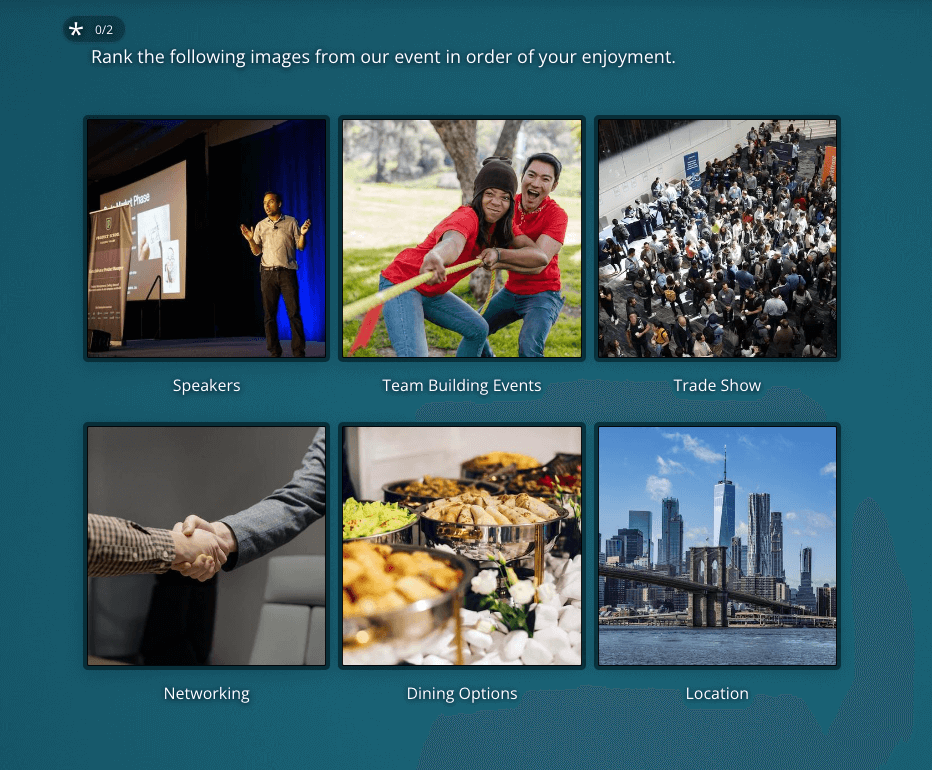Many types of sampling involve random selection to ensure the sample group is representative of the larger population. Quota sampling turns this notion on its head because it simply involves reaching a specific number of respondents, without regard to any formal sampling rules or proportions. In this blog, we’ll look at how quota sampling works, provide examples of this type of sampling method, and look at the pros and cons.Quota Sampling Definition
A quota is a “a fixed minimum or maximum number of a particular group of people allowed to do something.” Therefore, we define quota sampling as “a non-probability sampling method that relies on the non-random selection of a predetermined number or proportion of units, called a quota.”
To better understand the definition of quota sampling, it helps to know the difference between probability sampling and non-probability sampling.
- Probability sampling means that the sample population is completely random, and everyone has an equal chance of being selected.
- Non-probability sampling means that the sample population is selected purposefully and not everyone has an equal chance of being selected.
This means that quota sampling gives researchers some ability to control certain aspects of their sample selection. In controlled sampling, there are some limitations while in uncontrolled sampling, there are no restrictions. Either way, because the researcher is in some ways controlling the sample, it cannot be applied to the wider population and there is a high risk of survey bias being introduced. We’ll discuss all of this shortly.
How to Conduct Quota Sampling
Although quota sampling has no formal rules or proportions, there are still some steps to take to do it correctly. Here’s the four steps to quota sampling.
- Divide the sample population into subgroups. These mutually exclusive subgroups could be as simple as men and women, or more complex with multiple subgroups.
- Select an appropriate sample size. A small business determines they have 1000 customers and choose to sample 10% of them, so 100 people total.
- Determine the weightage of subgroups. This means evaluating the proportion in which the subgroups exist in the population. For example, a store determines its customer base of 1000 is comprised of 600 women and 400 men.
- Sample based on proportion. The quota size should be representative of the collective subgroup population. In the example above, he should select 60 women and 40 men. These are his quotas.
Example of Quota Sampling
An example of quota sampling in the real world is the best way to understand how it works. First, consider that in other types of sampling using randomization, a researcher may take their entire customer list of 1000, assign numbers to each customer, and then use a random number generator to select a sample of 100. The result is completely random, with all 1000 customers having an equal chance of selection.
With quota sampling, a researcher may have a quota of 60 women and 40 men. So, he stands outside the store and surveys the first 60 women and 40 men who come into the store. Boom, done! It’s that easy. But be sure to read on to learn the biggest disadvantage of this sampling technique.
Quota Sampling Advantages and Disadvantages
Quota sampling has many advantages, and one drawback that could seriously make a researcher re-consider using this method.
Benefits of Quota Sampling: Quick, Easy, and Inexpensive
Quota sampling is a time and money saver and often used by researchers working within a tight timeline or budget. Because there’s no need for randomization or strict requirements in place, quota sampling is a simple way to get some usable results. Analysis after the survey is also usually more straightforward, which can reduce the need for additional resources.
Quota Sampling Disadvantage: Risk of Survey Bias
The negative aspect of quota sampling is the potential for sampling bias, which could be a major drawback depending on the type of research being conducted. To see how sampling bias can easily occur with quota sampling, let’s look back at the example of the researcher who stood outside his store to survey men and women.
This survey may include survey bias in a number of ways:
- He’s surveying only people who are only shopping in his store on one particular day. They could mostly be first-time customers, so the sample isn’t factoring in the opinions of long-time customers.
- By surveying outside the store, he’s excluding the opinions of customers who do the majority of their shopping online.
- He may conduct this survey between the hours of 9am – 5pm, when many people are working. So, his sample might mostly consist of unemployed, stay-at-home, or retired customers (and in this case, age could be greatly skewed).
He could introduce his personal bias in a number of ways:
- He may approach only men and women he thinks look like “high-end” shoppers, which would rule out customers shopping for value.
- He might only approach men and women of a certain race, ethnicity, or age, skewing results to one demographic.
- He might avoid parents with children because they’re busy managing the kids. However, this could limit his sample to mostly people without children who likely have very different shopping habits.
Using Online Image Surveys
As with any survey, to improve your response rates to avoid having to find a new quota sample, consider using online surveys with photos. With SurveyLegend, our picture surveys boost engagement, help trigger respondent emotion and memory, and cross language barriers.

Conclusion
Quota sampling is an easy and efficient way to get some answers from a subset of a larger population. However, because it is not conducted with survey randomization in mind, the threat of survey bias is much larger than other types of surveys. It’s up to the researcher to weigh the pros and cons of quota sampling, and then it’s on with the surveys!
Ready to do some online surveying? SurveyLegend has you covered! Our free online survey maker allows you to ask a wide variety of survey questions, from multiple choice to ranking questions, sliders to star ratings. Of course, our picture surveys tend to be the most popular! We offer a high level of security, real-time analytics, and surveys that render beautifully on any device. Start today with SurveyLegend!
Which types of sampling do you usually use? Do you use quota sampling? Is there another method of sampling you prefer, and if so, why? Let us know in the comments!
Create your FREE Quota Sampling Survey, Poll, or Questionnaire now!
Frequently Asked Questions (FAQs)
Quota sampling is known as “a non-probability sampling method that relies on the non-random selection of a predetermined number or proportion of units, called a quota.”
Quota sampling is a quick, easy, and inexpensive way to get survey results. The one drawback is that because of the lack of randomization, there is a greater potential for survey bias.
Two types: Controlled sampling, which has some sampling restrictions, and uncontrolled sampling, which has none.




